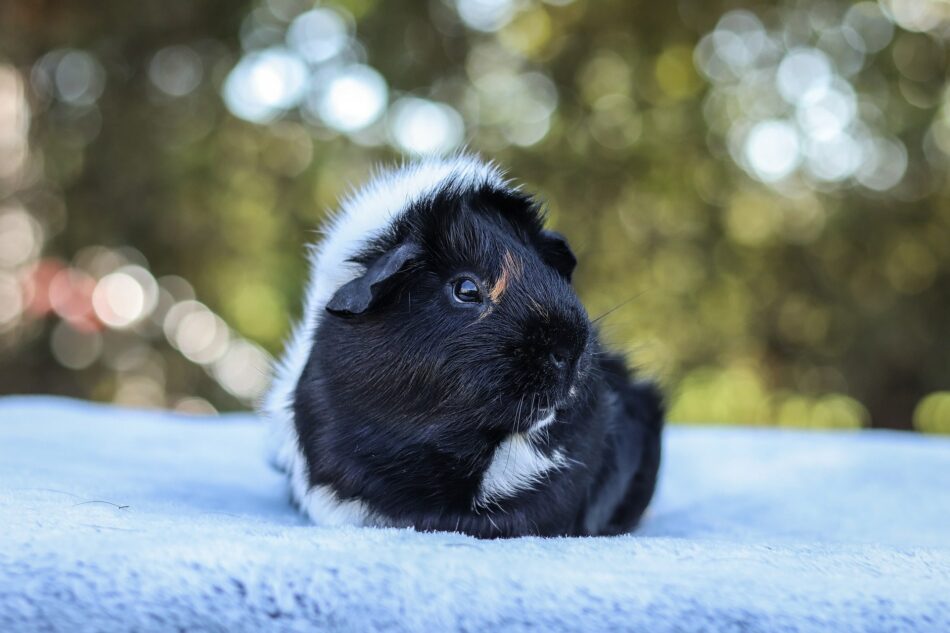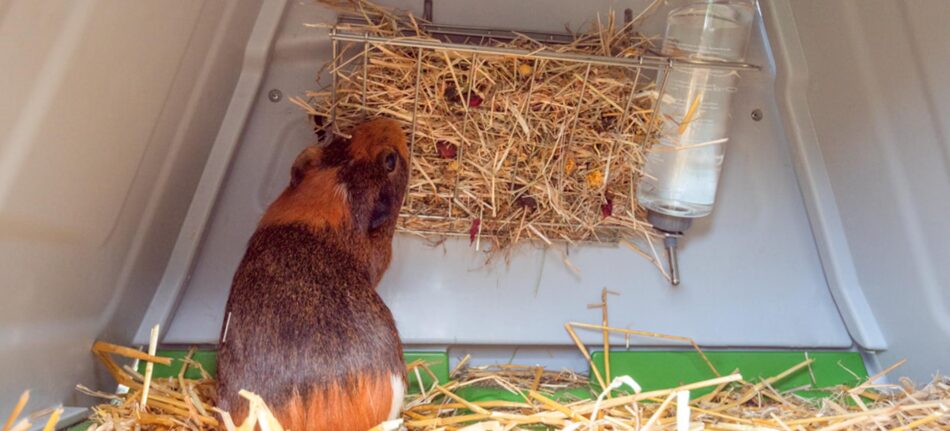Do guinea pigs like the snow?

Winter wonderlands may appeal to some people and animals – but guinea pigs do not like the snow. In fact, because of their physiology and origins, snow can be dangerous for cavies. See how to protect your guinea pigs this winter from the snow, and how to help them enjoy the chilly season ahead.
Why do guinea pigs dislike the snow?
Guinea pigs trace their lineage back to wild cavies in South America. While our domesticated piggies are far removed from their wild cousins that still roam this area, their physiology hasn’t changed much. Because their native habitat is a temperate climate, guinea pigs are sensitive to extreme temperatures. The freezing temperatures that create snow, and the snow itself are both a threat to your cavies’ health and safety.
The dangers of snow to guinea pigs
Even if your guinea pigs are accustomed to living outdoors, winter precipitation poses a large threat to their safety. Here are some of the reasons why snow can harm your cavies.
Frostbite
Frozen precipitation can spell frostbite quickly for uncovered body parts. Guinea pigs have naked feet that are susceptible to frostbite if they have to stand in the snow for an extended period of time. Anything more than a few moments of contact can chill your cavies’ feet to the point of frostbite. If you suspect your guinea pig has frostbite, you should contact your veterinarian right away.
Hypothermia
While it’s not specific to the snow, hypothermia can occur quickly in cavies that are both cold and damp. Hypothermia sets in when a guinea pig’s body temperature drops below 95 degrees. Symptoms of hypothermia in guinea pigs include:
- Shivering
- Lethargy
- Pale limbs that are cool to the touch
Cavies that have gotten too cold should be brought into a warm space quickly, but caution should be taken that they aren’t warmed up too quickly to avoid sending them into shock. Wrap them up in a blanket or towel and bring them inside, while rubbing their bodies vigorously. Hypothermia is a medical emergency in guinea pigs, and you should always call your veterinarian if your cavy displays any symptoms.
Reduced access to food and water
Another winter weather struggle is keeping the path to your guinea pigs’ food free of snow, and keeping their water thawed. Frozen paths or snowy treks to get to their food with increase your cavies’ risks of contracting frostbite or hypothermia.
Feeders should be elevated to prevent snow from blowing into their feed, and water bottles should be rotated throughout the day, being replaced with warm water. You can also wrap water bottles to insulate them against the cold. Open-top containers of water can have bird bath heaters submerged in them to prevent them from freezing — but be sure that any electrical cords are out of your cavies’ reach.
Guinea pig snow safety tips
Guinea pigs can fare outside in the snow if certain conditions are met. But, if the temperatures are below freezing for an extended period of time, or if your area receives heavy snowfall, it may be best to bring your guinea pigs inside for the winter.
Proper housing
An insulated, draft-free guinea pig hutch can go a long way in keeping your cavies safe in the cold. Omlet’s Eglu Go Guinea Pig Hutch is designed for year-round use and comfort, while providing a snow-free reprieve from the elements. Use deep bedding like straw and provide fleece blankets inside of the hutch for your cavies to burrow into for extra warmth.
Add layers
Extreme weather jackets can be added to the Eglu Go Guinea Pig Hutch for an added layer of insulation. These hutch covers keep snow and ice off of the hutch, keeping the interior temperature more stable. And, with full coverage, the doors and latches of the hutch will remain accessible and frost-free.
Reinforce their run
You can keep snow out of your cavies’ run by covering the top and sides. Our guinea pig run covers are heavy-duty, and effectively keep precipitation out of the run. Choose clear covers to allow warming rays of sun in while keeping the snow out, or solid covers to give your guinea pigs the feeling of privacy when they venture out in the winter air. Or, combine both types of tarps for the best of both worlds.
Do some guinea pigs fare better than others?
The same safety measures should be taken for any breed of guinea pigs. While cavies have a variety of coats, there are no distinct advantages of a certain type or texture of fur. Longer-haired guinea pigs may be better insulated than short-haired breeds, but as long as your guinea pigs are used to living outdoors, they’ll have molted and regrown a new winter coat that’ll help insulate them against the cold. The main goal is to keep your cavies’ coats dry so that they’re able to maintain their insulating properties.
The exception to this is the Skinny Pig breed. These hairless cavies have no coats at all to protect them from extreme temperatures, and should only be kept outdoors during moderate weather.
Omlet and your guinea pigs
Guinea pigs might not like the snow, but they can enjoy their time outside this winter in an Eglu Go Guinea Pig Hutch. Keeping a close eye on your cavies during the cooler weather will help ensure they’re enjoying their time outside and prevent health conditions brought on by the snow. And, with Omlet, your guinea pigs can nestle in their insulated hutch — comfortably dreaming of the snowless days to come.
This entry was posted in Guinea Pigs

